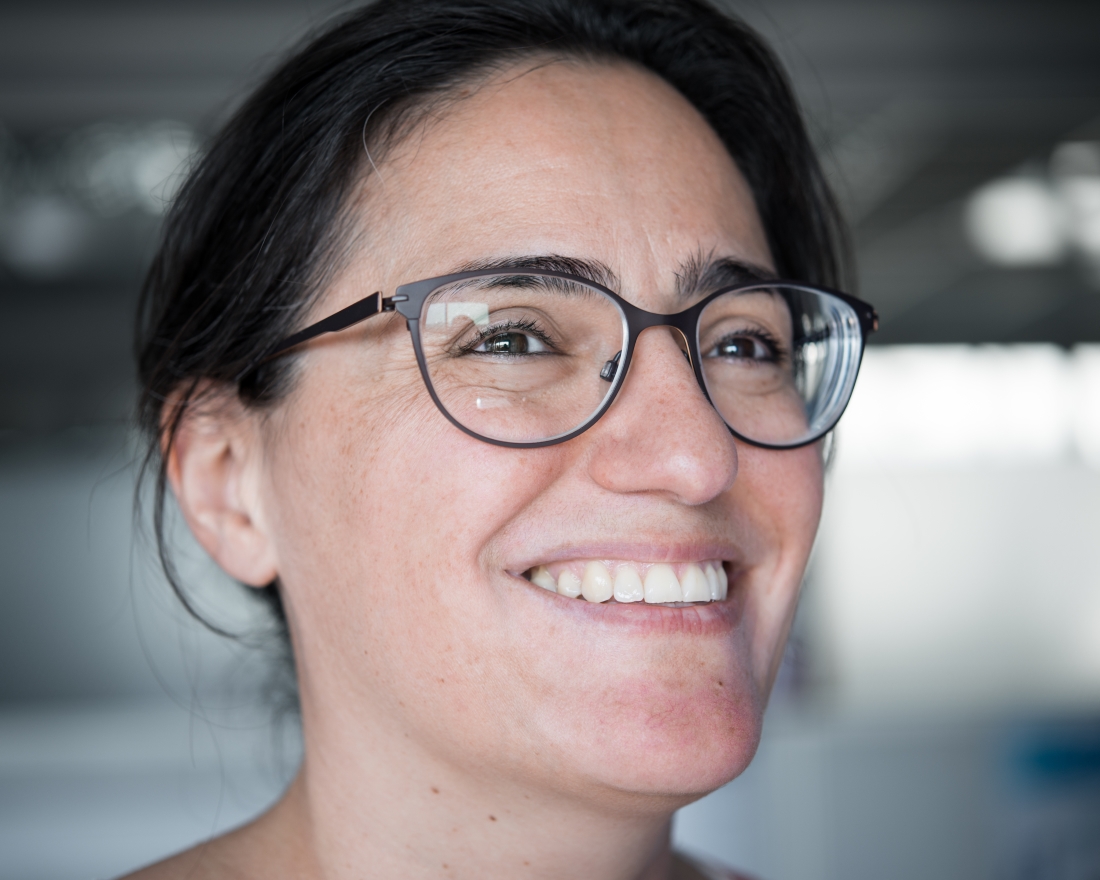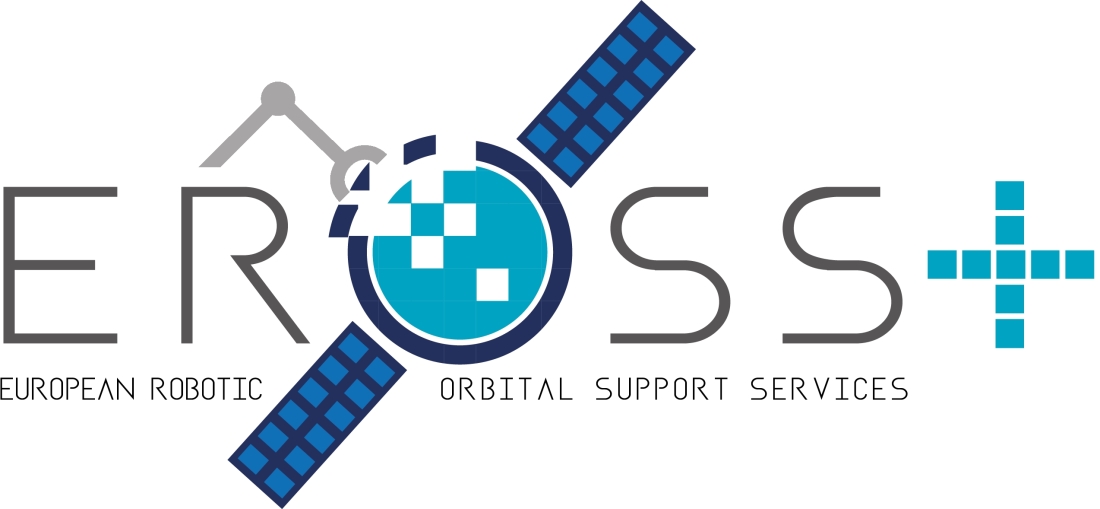Meet Stéphanie Behar-Lafenêtre, a real fan of robotic space missions
Could you summarize your career to date?
After earning my engineering degree, I started my career at Thales Alenia Space in 2000. My first assignment was a fascinating ESA project called GOCE, the agency’s first satellite designed to map the Earth’s gravitational field with unprecedented accuracy. I helped develop the satellite’s main instrument, an extremely sophisticated gradiometer.

© Boris Wilensky / Human Value
From project to project, I developed my expertise, especially in mechanical engineering. For instance, I studied special materials for hyper-stable structures: with ceramics, or optical mirrors that are used in some Earth observation satellites. I moved on to several R&D management positions, before being named coordinator of the EROSS+ (European Robotic Orbital Support Services) project in 2020.
What does the EROSS+ project entail?

After having coordinated the H2020 project I3DS (Integrated 3D sensors), aimed at developing an array of sensors for space exploration missions, Thales Alenia Space led another project, dubbed EROSS, dedicated to On Orbit Servicing. There are a number of enabling technologies needed for orbital maintenance operations; we have to develop sensors, robotic arms and grippers to work on the object in orbit, as well as docking and refueling systems. At the same time, we have to develop the guidance, navigation and control system that allows our space vehicles to safely approach the target satellite.
In January 2021, the European Commission chose the EROSS+ project proposed by Thales Alenia Space and partners, awarding a preliminary project (phase A/B1) contract for a dedicated On-Orbit Servicing demonstration.
Following on from the original EROSS project, EROSS+ aims to develop a European solution for tomorrow’s on-orbit servicing missions. These spacecraft will be tasked with a wide range of operations in orbit, including deorbiting satellites at end of life, robotic manipulation, extending satellite lifespan, refueling, inspection, etc. Kicking off in February 2021, the 24-month project aims to design a demonstrator, while at the same time maturing the main technology building blocks needed for this type of mission.
The typical sequence for this type of demo mission includes the complete in-orbit phase for the “Servicer” spacecraft’s rendezvous with a “Customer” satellite, then docking together to carry out the work. The overall purpose is to validate its ability to perform in-orbit operations of this type for future missions. Our aim is to perform an in-flight demonstration by 2026 so we can validate all the technologies needed for On Orbit Servicing.
What’s the scope of possibilities for this type of spacecraft?

By capitalizing on Thales Alenia Space’s proven expertise in space exploration, robotics and orbital infrastructures, we want to establish a position as the leader in the On Orbit Servicing market. These three projects within the scope of Europe’s Horizon 2020 program, I3DS, EROSS and EROSS+, which we coordinated along with all our partners, provide a real springboard to address this new market.
As you know, it costs a lot of money to get a satellite into orbit! One that operates in geostationary orbit (circling a fixed point on the Earth at an altitude of 36,000 km) generally offers a design life of 15 years. If a technical issue were to arise in orbit, we can’t fix it. It would be impossible to send an astronaut to the satellite at that orbit; not only would the cost be prohibitive, but you’d probably need dozens of astronauts like Thomas Pesquet or Samantha Cristoforetti to carry out all the missions needed to extend the life of satellites, or repair them as we do on the ISS.

On Orbit Servicing is the ideal solution for this type of mission. As I said earlier, spacecraft fitted with robotic arms, grippers, tools, etc. would span a wide range of applications. The Servicer spacecraft would start by inspecting the customer satellite’s environment, then rendezvous with it to perform the required maintenance.
For instance, consider the problem of space debris. Today, some 5,400 satellites are circling over our heads, but only 40% of them are in service: the balance – over half – therefore constitute space debris. The number of satellites in orbit has doubled in the last three years, and more than 10,000 satellites are expected to be launched in the next ten years. There are now some 34,000 objects larger than 10 centimeters in orbit as space debris. And if we consider all objects larger than 1 millimeter, the total explodes to 130 million! At the end of a mission, the On Orbit Servicing spacecraft will either redirect the satellite to a graveyard orbit, as done for geostationary telecom satellites, or send it back into the atmosphere to burn up, the preferred solution in the coming years for satellites in low Earth orbit.

At Thales Alenia Space, we’re betting on the satellite life extension solution. By refueling these birds, or conducting maintenance, we can increase their service life. And in the near future, we could well see dual launches of a geostationary telecom satellite, for instance, paired with a Servicer under the same fairing.
Looking ahead, we will soon be seeing human missions to the Moon, and eventually even further into space. Today, you hear a lot about NASA’s Artemis mission, designed to bring astronauts back to the Moon, which will also be used as a waystation to prepare for missions into deep space, hopefully starting with Mars. Astronauts on Mars will no longer be in the realm of science fiction, and this long dreamed of scenario is beginning to take shape. Thales Alenia Space’s Turin plant built fully half of the pressurized volume on the International Space Station, and we leveraged this expertise to design three pressurized modules for the Gateway lunar space station, as well as two key components in Axiom, the world’s first commercial space station. We are prime contractor for ExoMars, the program designed to detect traces of past or present life on Mars, and we also contribute to the European service module for NASA’s crewed spacecraft, Orion, designed for exploration missions into deep space. Given this current slate of exploration programs, On Orbit Servicing spacecraft really come into their own, especially for robotic rendezvous and docking operations. I have every confidence in the growth of this very promising market, which is also eco-friendly. These new types of spacecraft will allow us to deploy a practical response to space debris. We are aiming for a market rollout towards 2028.
This project has received funding from the European Union’s Horizon 2020 research and innovation programme under grant agreement No 101004346.
Illustrations: photo © Boris Wilensky / Human Value; logo ©EROSS+; Artistic views and video ©Thales Alenia Space/Master Image Programmes